
The Acaridae are a family of mites in order Sarcoptiformes.
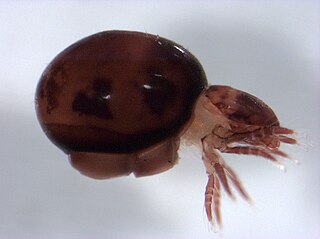
Oribatida, also known as oribatid mites, moss mites or beetle mites, are an order of mites, in the "chewing Acariformes" clade Sarcoptiformes. They range in size from 0.2 to 1.4 millimetres. There are currently 12,000 species that have been identified, but researchers estimate that there may be anywhere from 60,000 to 120,000 total species. Oribatid mites are by far the most prevalent of all arthropods in forest soils, and are essential for breaking down organic detritus and distributing fungi.
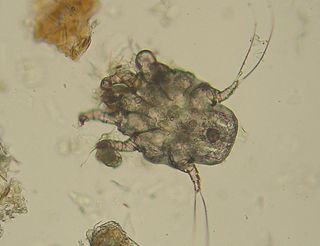
Astigmatina is a clade of mites in the superorder Acariformes. Astigmata has been ranked as an order or suborder in the past, but was lowered to the unranked clade Astigmatina of the clade Desmonomatides in the order Sarcoptiformes. Astigmatina is now made up of the two groups Acaridia and Psoroptidia, which have been suborders of the order Astigmata in the past. Astigmatina contains about 10 superfamilies and 76 families under Acaridia and Psoroptidia.
Raphignathoidea is a superfamily of the Acari (mite) order Trombidiformes, comprising 1087 species in 62 genera and 12 families.

Histiostomatidae is a family of mites in the clade Astigmata.

Histiostoma is a genus of mites in the family Histiostomatidae.

The Laelapidae are a family of mites in the order Mesostigmata. The family is also referred to in the literature as Laelaptidae, which may be the correct spelling.
Austrophthiracarus is a genus of mites in the family Steganacaridae.
Fagacarus is a genus of mites in the family Acaridae. It contains a single described species, and at least two undescribed species. Fagacarus species feed on fungi in decaying wood.
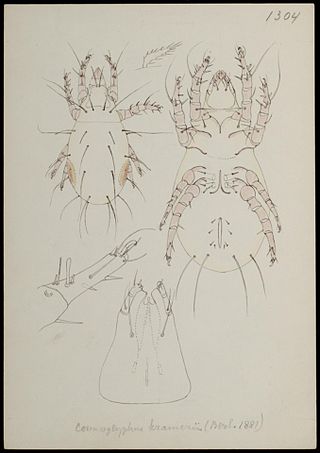
Cosmoglyphus is a genus of mites in the family Acaridae.
Schwiebea is a genus of mites in the family Acaridae. It is among the largest in the family with over 60 species.
Psylloglyphus is a genus of mites in the family Winterschmidtiidae.

Blattisociidae is a family of mites in the order Mesostigmata.
Echimyopodidae is a family of mites in the order Astigmata. There are at least two genera and two described species in Echimyopodidae.
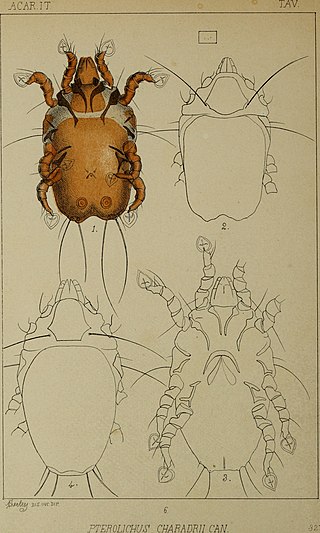
Avenzoariidae is a family of feather mites in the order Astigmata. There are at least 15 genera in Avenzoariidae. They are found on the feathers of aquatic birds, and in the case of one species, birds of prey.

Glycyphagidae is a family of mites in the order Astigmata. There are more than 25 genera and 100 described species in Glycyphagidae.

Glycyphagus is a genus of astigs in the family Glycyphagidae.
Cochlodispus minimus is a species of mite from the family Microdispidae, formally described by Sándor Mahunka in 1976. One adult individual was measured with a body length of 79 μm, making it the smallest known mite species. It was originally described from Ethiopia, along with cogeners C. africanus and C. fimbrisetus, and inhabits soil and litter.
Cochlodispus is a genus of mites from the family Microdispidae. One member of the genus, Cochlodispus minimus, is considered the smallest known mite species with a recorded adult body length of 79 μm.
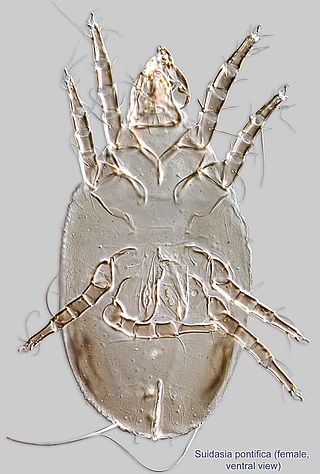
Suidasia is a genus of mites in the family Suidasiidae and clade Astigmatina.












